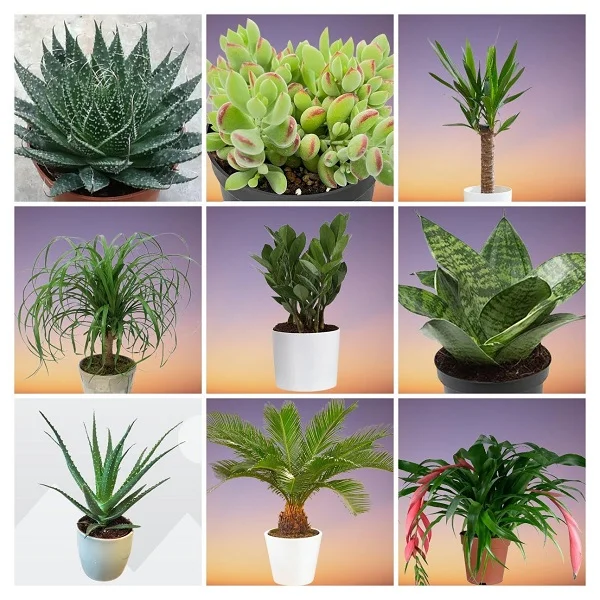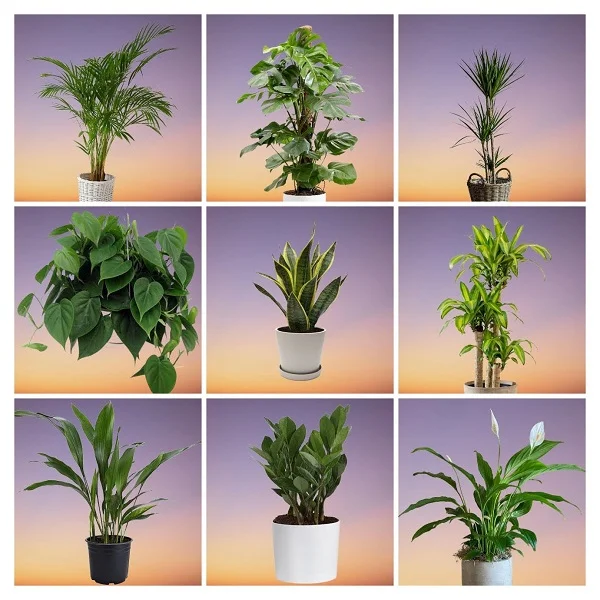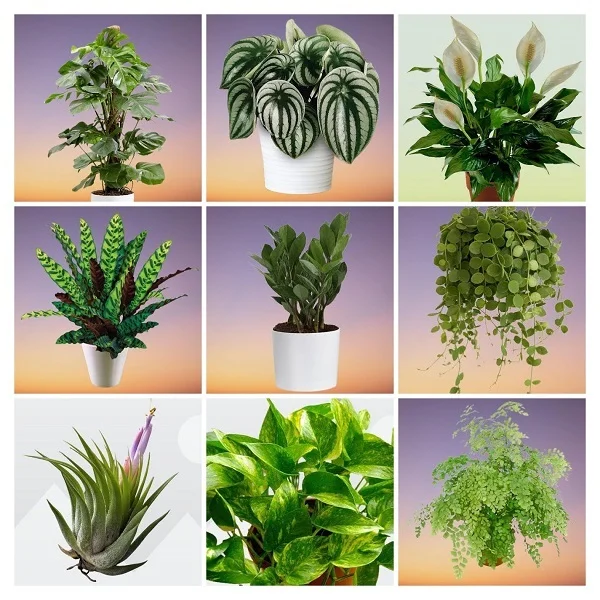Caring for Aspidistra elatior (Cast Iron Plant) Indoors, Propagation, Problems & Solutions
Some links in this post may be affiliate links
Cast Iron Plant (Aspidistra elatior) grows best in bright indirect light, average warmth, moderate humidity and moderately moist, fertile, well-drained soil coupled with monthly feeding in the growing season.
Aspidistra elatior is one of the highly tolerant plants and is among the near-impossible to kill plants as it easily adapts to less than perfect growing conditions.
Cast Iron Plant is an extremely slow grower and can withstand periods of dryness at the roots if the temperature is not too high. It is also very tolerant to shade and can withstand some level of neglect making it one of the easy-care plants for beginners.
Cast Iron Plant can withstand deep shade, dry soil, hot temperatures, air pollution and neglect but will be scorched by direct sunlight, therefore, keep it away or shield it from direct sunshine.
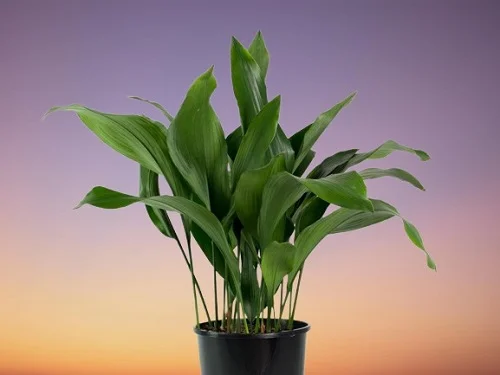
Botanical name: Aspidistra elatior
Family: Asparagaceae
Common name: Cast Iron Plant
Origin
Aspidistra elatior (Cast Iron Plant) is native to Taiwan and islands in southern Japan including Kuroshima, Suwanosejima and Uji islands where it grows in shade under trees and shrubs.
Size
Cast Iron Plant grows to a height of about 1.5 feet to 2.5 feet from rhizomes from which the leaves arise rather than being borne on stems. On account of its compact size and tolerance to low light conditions, it is among the the best plants for a study table or an office desk.
The leaves in Aspidistra elatior are glossy, dark-green in color, about 12-20 inches long and are grouped in small tufts of 2-4 and this makes this plant one of the popular large-leafed plants that make a bold statement in any space.
Flower
The flowering stem in Aspidistra elatior is usually very short so that the flowers appear low down among the leaves. The flowers in Cast Iron Plant are 8-lobed and cream colored with maroon coloring on the inner surface.
Varieties
The various varieties of Aspidistra elatior include Okame which bears green leaves with dramatic white streaks along the leaf length.
Lennon's Song whose leaves bear light green or yellow vertical stripes.
Ashahi whose leaf tips become white as the plant grows.
Hoshi-zora also called Milky Way whose leaves are decked in yellow to white spots among other varieties.
Is Aspidistra elatior toxic?
No. Aspidistra elatior is non-toxic to both humans and pets as indicated by ASPCA. It is among the pet-safe plants for the home.
Where to Buy
Would you like to add Cast Iron Plants to your plant collection? You may acquire Aspidistra elatior online from Amazon (Link to Amazon).
How to Care for Aspidistra elatior Indoors
To care for Aspidistra elatior indoors, give it bright indirect light (filtered light), average warmth of 15-260C, humidity of 50-55% and moderately moist, fertile, well-drained soil coupled with monthly feeding during the growing season.
Cast Iron Plant requires repotting 4-5 years only when it becomes pot-bound. Regular grooming is needed to keep it neat and also reduce pest and disease infestations. Keep reading for more on these growing conditions and how to achieve them.
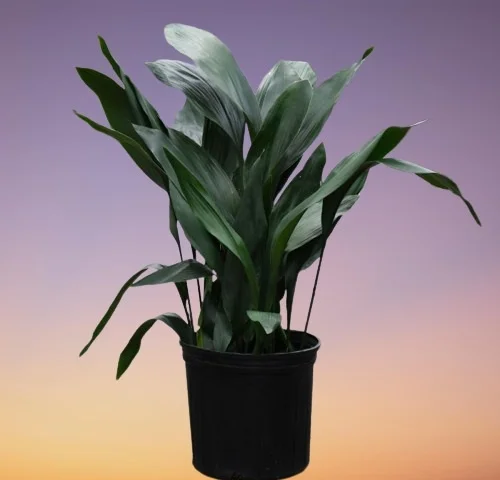
Light Requirements
How much light does Aspidistra elatior need?
Aspidistra elatior is extremely tolerant to varying light intensity but not direct hot sunlight as it leads to sunburn brown spots on the leaves.
It grows best in bright light away from direct sunlight; position it infront of a brightly lit window. Rotate the pot regularly to ensure that the plant receives light on all sides for even growth as well as prevent lopsided growth.
Aspidistra elatior will tolerate lower light conditions and is one of the best low-light plants for the dark spaces.
Watering
How often do you water Aspidistra elatior?
Water your Aspidistra elatior liberally in spring and summer and allow the top half of the soil to dry out between waterings. Avoid too much watering to prevent rotting and yellowing.
Decrease watering in fall and winter to maintain the soil slightly moist as growth is minimal at this time. Do not allow the soil to dry out completely to avoid wilting and drooping.
Use water that is at room temperature to prevent cold shock which can result in stunted growth and yellowing.
Ensure that the soil is free-draining and the pot has a drainage hole to prevent waterlogging as it can lead to root-rot and death of the plant.
Temperature & Humidity
Aspidistra elatior thrives in an average warmth of 15-260C. However, it can withstand a wide range of temperatures. Keep it away from drafts emanating from AC units, windy doors, drafty windows and others.
Cast Iron Plant has no need for high humidity. An average room humidity of 50-55% is ideal for this plant although it can withstand dry air.
Fertilizer
What is the best fertilizer for Cast Iron Plants?
Cast Iron Plant does not require heavy feeding. Feed your Aspidistra elatior with a balanced, liquid fertilizer once a month in spring and summer to boost growth.
Stop feeding in fall and winter as growth is minimal at this time, so feeding at this time can cause fertilizer and death of the plant.
Potting Mix
The best potting mix for Aspidistra elatior should be rich in organic matter, loose and well-draining to avoid getting soggy soil. The soil should be loose enough to allow water to drain out fast enough as the plant is prone to root-rot. Most cactus and succulents soils are ideal for this plant as they drain easily.
Repotting
Aspidistra elatior grows extremely slowly therefore it does not require frequent repotting. Repot every 4-5 years or when the plant has outgrown its pot, repot during the growing period.
Use free-draining soil that is rich in organic matter and a pot 1 size larger than the current one. Take care not to damage its delicate roots.
Confirm that the pot has a drainage hole to prevent the soil from getting soggy as it can lead to root-rot. Check out these pots with drainage holes on Amazon.
Pruning & Grooming
Pruning Aspidistra elatior involves removal of dead leaves by snipping them off at the soil level to keep the plant neat and minimize pest and disease infestations.
Regularly clean the leaves by damp-wiping with a soft cloth to get rid of dust and discourage pest infestation.
Aspidistra elatior Propagation
Aspidistra elatior (Cast Iron Plant) is propagated by plant division. The best time to propagate is at the beginning of the growing season (spring to early summer) when it is in active growth to promote establishment.
How to propagate Aspidistra elatior by plant division
- Water the plant thoroughly at least one day before to make it easier to divide, to hasten establishment and to reduce plant shock.
- Remove the plant from its pot and divide the rhizomes into several sections by pulling the roots apart.
- Ensure each section has some roots and at least 2 leaves. Take care not to damage the roots.
- Pot each section in its individual pot in moist, free-draining soil.
- Make sure that the pot has a drainage hole to prevent the soil from getting soggy as it can lead to rotting.
- Place the set up in a warm, brightly-lit place and maintain the soil moist until new shoots begin to sprout.
- Keep in mind that this may take quite sometime and it requires patience.
- Once the new plant is well established and begin the normal routine care.

Aspidistra elatior Common Problems & Remedies
Aspidistra elatior (Cast Iron Plant) common problems are brown leaves, plant dying, yellow leaves, cracked leaves, pests and diseases among others. Keep reading for more on these problems and how to fix them.
Brown leaves
Why are the leaves on my Aspidistra elatior going brown?
The main causes of brown leaves on your Aspidistra elatior are inconsistent watering, temperature stress, direct sunlight, or aging.
How to fix it
Inconsistent watering: Water when the top 2-3 inches of soil dry. Never allow the soil to dry out completely.
Temperatute stress: Protect the plant from drafts originating from AC units, heat sources, windy doors and others.
Direct sunlight: Keep the plant away from direct sunlight or use a light curtain to filter the sunshine.
Aging: This is a natural process; as the plant matures the lower leaves turn brown and begin to die.
Plant dying
Why is my Aspidistra elatior dying?
Your Aspidistra elatior may be dying due to root-rot disease which is prevalent in soggy soil due to poor soil drainage. It presents with rotting stems, yellowing of leaves and eventual collapse of the plant
How to revive a dying Cast Iron Plant?
- Slip the plant out of its pot, wash off the soil and inspect the roots.
- Brown-black, mushy roots indicate root-rot; cut them away. In addition, cut away any stems showing any signs of rot.
- Disinfect the healthy roots and the entire plant with a copper-based fungicidal solution as recommended by the manufacturer.
- Disinfect the pot with the fungicidal solution or use a fresh pot to repot the plant in fresh potting soil.
- Make sure that the pot has a drainage hole and the soil is well-draining to prevent waterlogging.
- Water the plant with the fungicidal solution and place it in a warm, brightly-lit spot.
- Do not water the plant again until new growth appears and avoid overwatering and soggy soil thereafter.
Yellow leaves
Where the leaves of Aspidistra elatior begin to turn color to shades of yellow, too much sunlight is the cause as it cannot tolerate direct sunlight.
Remove the affected leaves and move the plant to a more shaded place away from direct sunlight or protect it by instaling a light curtain to filter the light.
Bruised, torn or cracked leaves
Bruised, torn or cracked leaves in Aspidistra elatior are caused by physical stress due to being brushed against.
Cut away the affected leaves with a sharp clean knife or pair of scissors to keep the plant neat and tidy. Position or keep the plant away from the line of traffic to avoid bruising.
Diseases
Another common disease in Aspidistra elatior is leaf spot disease which is characterized by brown or black leaf spots followed by leaf drop. It is enhanced by overwet conditions coupled with poor air circulation.
How to fix it
- Remove and burn the affected parts to reduce the risk of spread to the rest of the plants.
- Spray the affected plant with a systemic fungicide and ensure to cover all the parts with the fungicidal solution.
- Keep the plant on the dry side, do not mist it and ensure good air flow.
- Use a pot with a drainage hole and well-drained soil.
Pests
Aspidistra elatior is quite tolerant to pests but weak plants can be attacked by mealybugs, scales and spider mites. Always ensure the plants are healthy at all times to minimize pest infestations.
How to fix it
- Isolate the affected plant to prevent spread to the other plants.
- Treat the plant with neem oil or an insecticidal soap. Ensure to follow the manufacturers' recommendations on the label.
- Regularly damp-wipe the leaves with a soft cloth to discourage the pests.
- Maintain the plant well pruned to discourage the pests.
- Set the pot on a wet pebble tray or group the plants together to raise humidity to depress the pests infestations.
You liked it? Share on social media.
Related Content
Amazon Associates Disclosure
Homeplantsguide.com is a participant in the Amazon Services LLC Associates Program, an affiliate advertising program designed to provide a means for sites to earn advertising fees by advertising and linking to amazon.com.



